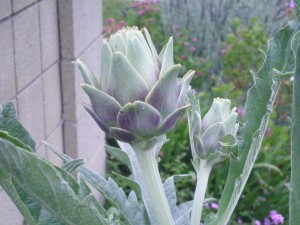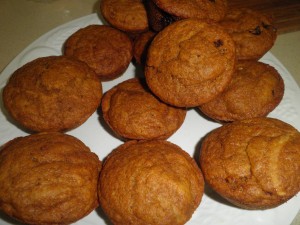Polls
Are your mealtimes with your child pleasant?
- Yes, almost always pleasant (100%, 3 Votes)
- No, it is usually a struggle (0%, 0 Votes)
Total Voters: 3
 Loading ...
Loading ...
Category Archives: Cooking
Almonds in All Forms
Recently, I bulk-bought ten pounds of raw almonds with other local gardeners in the area. Why would I do that when I live and California and can get them from the local store? Well, they go through a pasteurization process to kill any organisms that might be on them, like samonella. But in doing so, they also can eliminate beneficial enzymes that the raw food movement so greatly follows.
No, the reason I bought these raw almonds was because they came from Italy. Yes, Since the United States doesn’t allow any truly raw almonds, this was my next choice.
Posted in Cooking, Food safety, Foods from scratch, Health, Nutrition, Pestistides
Tagged almond flour, Almonds, celiac disease, gluten-intolerance, making almond flour, raw almonds
1 Comment
Sodium Intake and Your Risks
Did you know that 1 in 4 people have hypertension or high blood pressure? Not surprising when most folks are consuming 3500mg of sodium/day. That’s more than 60% of the recommended intake. Half these folks can reduce their hypertension risk by decreasing their sodium intake or table salt (aka sodium chloride). Why is our sodium so high? Most Americans are consuming their sodium intake through processed foods, ie snacks, soda, or microwavable meals.
Food Safety During the Summer
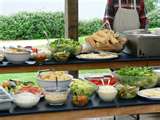 No nutrition blog would be complete without food safety guidelines for summer cooking.
No nutrition blog would be complete without food safety guidelines for summer cooking.
Following some of the basic steps below will help you have a safe summer (or any time of year) gathering without getting folks sick.
- Clean hands, food contact surfaces, fruits and vegetables.
- To prevent the spread of bacteria, do not wash or rinse raw meat or poultry.
- Separate raw, cooked and ready to eat foods when shopping, preparing or storing foods. No one wants cooked food on the same dish you had raw food. This is especially important for the “grill masters” out there.
Posted in Cooking, Food safety, Health
Tagged bacteria, clean hands, cooked food, cooking, fish, food safety, perishable, raw food, summer, USDA
Leave a comment
In Season: Berries
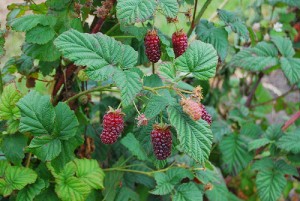 The time is NOW! Berries are available now through the beginning of fall. If you are growing a berry bush, i.e. raspberries or blackberries, you might have seen them already on your vines. But peak time does vary depending on the berry. Strawberries and blueberries are at their peak now, while blackberries and raspberries will be at their peak in August going into the fall.
The time is NOW! Berries are available now through the beginning of fall. If you are growing a berry bush, i.e. raspberries or blackberries, you might have seen them already on your vines. But peak time does vary depending on the berry. Strawberries and blueberries are at their peak now, while blackberries and raspberries will be at their peak in August going into the fall.
These fruits are great raw or cooked, especially as a pie. Among the first people to appreciate these fruits were Native Americans, who ate them, cooked them, dried them for adding to winter soups and stews, and even used them as medicines, dyes, and food preservatives.
Posted in Cancer, Cooking, Edible Plants, Health, Nutrition, Organic, Pestistides
Tagged berries, nutrition, organic, preparation, raspberries, storage, strawberries, strawberry soup, vitmains
Leave a comment
In Season: Artichokes
In all honesty, artichokes are probably a spring crop, but here in So Cal, they are ready for me to eat 🙂
A single artichoke is actually an unopened flower bud from a thistle-like plant, Cynara scolymus. It’s a member of the daisy family.
They were avidly cultivated in the fifteenth century in Florence and was reputedly taken to France by Catherine de Médicis, wife of Henry II. The French, Italians, and the Spanish continue to be the leading growers and consumers of artichokes. It was European immigrants who brought artichokes to the United States in the nineteenth century to Louisiana and then later to the mid-coastal regions of California, where the cool, foggy climate is ideal for growing.
Posted in Cooking, Edible Plants, Nutrition, Uncategorized
Tagged artichoke, cooking, daisy family, fiber, nutrition, recipe
Leave a comment
Onions & Garlic: A rose by any other name
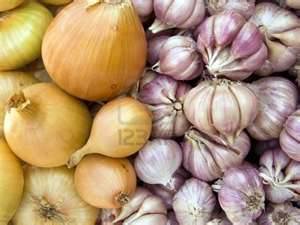 I have been attending herbal classes. While I know some of the benefits of the nutritional properities of some herbs, I always enjoy learning more. So I thought I would share the benefits of onions & garlic.
I have been attending herbal classes. While I know some of the benefits of the nutritional properities of some herbs, I always enjoy learning more. So I thought I would share the benefits of onions & garlic.
The distinctive odor that garlic produces doesn’t occur until it is crushed. This is the plant’s defense mechanism against insect predators. Garlic cloves contain an odorless , sulfur-containing phytochemical called “alliin.” When the clove is disrupted, alliin is released and reacts with an enzyme in the neighboring cells that converts it to the odoriferous “allicin.” Allicin is the garlic’s bug repellant – and a “people” repellant which is why many folks are shy about eating it. If that’s the case, roast or cook whole to avoid the smell.
Posted in Cancer, cholesterol, Cooking, Edible Plants, gardening, Health, Herbs, Nutrition
Tagged cholesterol, garlic, onions, quercetin, recipe
Leave a comment
Soaking Flour/Grains
I’ve recently have taken some classes on making better bread. Going back to scratch cooking has been something I’ve hesitated doing since it can be time consuming. It does require some planning, too. In taking on this effort, I have learned some valuable information. I’ve known for a while that the flour we use in grocery store is inferior, but I didn’t know to what extent. So I’ve learned how to grind my own flour. I’ve also learned the concept of soaking grains and flour. This has become an important part of the nutritional aspect of baking bread products. Soaking grains and flours can help release the phytonutrients (the plant nutrition) that the body can use more readily.
Posted in Cancer, Cooking, Diabetes, Health, Nutrition
Tagged anti-nutrition, phytates, soaking flour, soaking grains, whole grains
Leave a comment
Worth a Hill of Beans
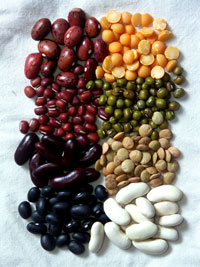 (Yes, I borrowed the title…I’m not that clever)
(Yes, I borrowed the title…I’m not that clever)
When I told some folks at work that I eat a plant-based diet, automatically the conversation went to what I eat for protein. “Oh are you eating Gardein?” Because I don’t like most of the meat-substitutes out there, I use beans as my primary source of protein. For reasons I’ve explained in one of my previous blogs, I avoid canned beans when possible. So, I thought I would share the benefits of this nutritonal powerhouse, the bean.
Healthy Whole Grains – You bet!
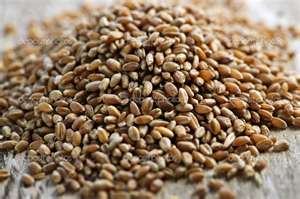 We all know that eating more whole grains is part of a healthy diet. It adds fiber along with additional B vitamins to our diet. Using the concept of soaking your grains will release all the vitamins and minerals, so your body can absorb it easier. Making your own bread, crackers, and chips can be made with whole grains. You can learn to make these items yourself and get the benefits of whole grains. Visit Ann Marie Michaels’ website to take her online classes 24/7. She is currently offering a discount until February 14th. Have your cake and get your nutrition, too. Well, maybe not literally 😉
We all know that eating more whole grains is part of a healthy diet. It adds fiber along with additional B vitamins to our diet. Using the concept of soaking your grains will release all the vitamins and minerals, so your body can absorb it easier. Making your own bread, crackers, and chips can be made with whole grains. You can learn to make these items yourself and get the benefits of whole grains. Visit Ann Marie Michaels’ website to take her online classes 24/7. She is currently offering a discount until February 14th. Have your cake and get your nutrition, too. Well, maybe not literally 😉
Posted in Cooking, Food groups, Health
Tagged baking, cooking, online class, whole grains
Leave a comment
The Hazards of Canned Food
 Since I have a family, I have become more discerning about the food I make for them. Yes, I cook more than we eat out. I could usually use convenience foods to get the job done. However, I recently found out that varies canned foods I buy at the supermarket might not be the best choice for me and my family. Canned beans and tomatoes save me time in the kitchen, but may be putting my health at risk.
Since I have a family, I have become more discerning about the food I make for them. Yes, I cook more than we eat out. I could usually use convenience foods to get the job done. However, I recently found out that varies canned foods I buy at the supermarket might not be the best choice for me and my family. Canned beans and tomatoes save me time in the kitchen, but may be putting my health at risk.



